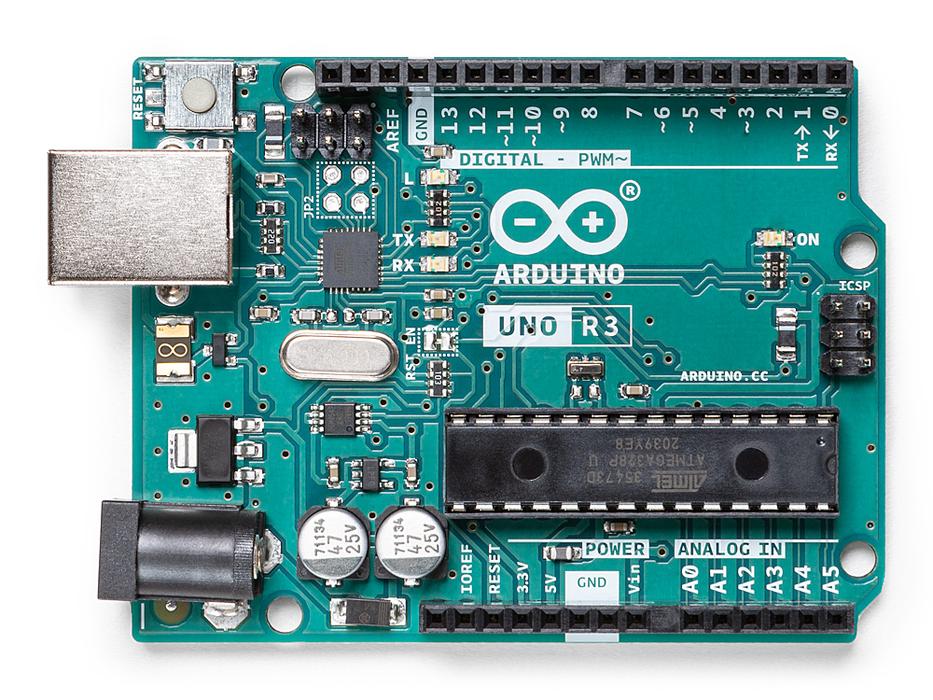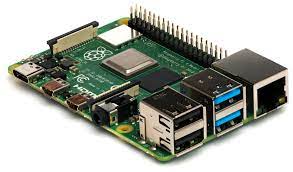Imagine you are driving home one fine day after work, you get notified by your smart fridge that you have to purchase some groceries. When you are about to reach your home, your air-conditioner sets your room at a pleasant temperature and your lights go on. These things are not mere fantasies, these things have been made possible with the applications of the internet of things (in short IoT). Smart wearables which can calculate your heart rate and calories taken or burned, smart kitchen appliances, tracking devices, etc, have been made possible with the application of IoT.
When it comes to IoT, Arduino and Raspberry Pi are two of the main devices used to implement it. Of course, we are not going to talk much about IoT here as we are going to cover the topic ‘Arduino vs Raspberry Pi’.
Before getting into the differences between Arduino and Raspberry Pi, we need to have a basic understanding of Arduino and Raspberry Pi.
Confused about your next job?
What is Audrino?

Audrino is an open-source electronic device that can read inputs (such as light on a sensor, finger on a button, or a Twitter message), and based on these inputs produces output (such as turning on an LED or activating a motor). Audrino was designed at Ivrea Interaction Design Institute as an easy tool aimed at students without a background in electronics and programming. After gaining popularity, it started changing to adapt to new needs and challenges. Owing to its simple and easily accessible user interface, it has empowered many projects, from everyday objects to complex scientific instruments.
Arduino boards are microcontrollers, not full computers with their own operating system like Raspberry Pi. They simply execute code written in C/C++, stored in their firmware. Arduino Integrated Development Environment (IDE) is an open-source software used to write codes and upload them to an Audrino board.
An important upside of Audrino is that it is open-source, which means that many design files and source code are already available. You can pick any one among them or improve them to make your own Audrino board.
Features
- Most of the Arduino boards come with an 8-bit Microcontroller.
- 32k bytes of flash memory and 2k bytes of SRAM (Static Random Access Memory).
- Input voltage required- 7 V – 12V
- Arduino uses C/C++ as a programming language.
- Digital I/O pins- 14
- Analog Input pins- 6
- Clock frequency-
- Processor speed ranges from 8 MHz to 400 MHz. The average speed of most of the Arduinos is 16 MHz.
- Flash Memory- 32KB
- It is limited to IDE (Integrated Development Environment)
What is Raspberry Pi?

A small, fully functional computer that can be plugged into a computer monitor, keyboard, and mouse. It has all qualities of a PC- a dedicated processor, memory, and a graphics driver. It even has its own operating system called Raspberry Pi OS which is an optimized version of Linux.
Raspberry Pi does not offer storage, but you can use microSD cards to store whatever OS (Raspberry Pi, Ubuntu Mate, etc) you like. Raspberry Pi also contains Bluetooth, ethernet, and WiFi-based connectivity, so it can also be used to transfer files over the internet. Raspberry Pi project design and the software are not open-source.
Since a Raspberry Pi board is no less than an entire computer inside a Printed Circuit Board, it is often called Single Board Computer or SBC. Raspberry Pi foundation is continuously updating and making it better. Since its release, it has been a popular choice for application in Robotics, Weather monitoring, IoT, and many other electronic systems.
Features
- Superior software implementation
- 64-bit Quad-core processor
- Large RAM (latest Raspberry Pi 4 Model B Board has up to 8G of RAM)
- Processor speed- 700MHz- 1.5GHz
- Raspberry Pi has 40 input/output pins.
- It can be connected to the Internet.
- It can run all kinds of applications (including MS Office and Email).
- It contains everything- CPU (Central Processing Unit), GPU (Graphics Processing Unit), Ethernet port, GPIO (General-purpose Input/Output) pins, and power source connector.
Key Differences
- Arduino boards are micro-controllers (not full computers), while Raspberry Pi boards are microprocessors.
- Raspberry Pi has its own operating system, while Arduino boards do not have one. The Arduino board works on simple instructions provided to them by IDE (Integrated Development Environment).
- Raspberry Pi supports the internet, Arduino boards do not support the internet.
- Arduino boards are cheaper, Raspberry Pi boards are a bit more expensive.
Difference Between Arduino and Raspberry Pi
It might seem at first glance that Raspberry Pi is a better deal, but isn’t it too early to judge? As we shall discuss this topic further, the picture might get clearer. Let’s see the differences between Raspberry Pi and Arduino.
| Basis | Arduino | Raspberry Pi |
|---|---|---|
| License | Arduino is an open-source project. Both its software and hardware design are open source. | Both hardware and software of Raspberry Pi are closed source. |
| Control Unit | From Atmega Family | From ARM Family |
| Clock Frequency | 16 MHz (Arduino UNO) | Up to 1.5 GHz in Raspberry Pi 4 B |
| RAM | Requires less RAM (2kB) | Requires large RAM (more than 1 GB) |
| CPU Architecture | 8-bit | 64-bit |
| Logic level | Arduino’s logic level is 5V. | Raspberry Pi’s logic level is 3V. |
| Power Consumption | Consumes about 200 MW of power | Consumes about 700 MW of power |
| Based on | Arduino is a Microcontroller | Raspberry Pi is based on a microprocessor |
| Hardware Structure | Simple hardware structure | Complex hardware Structure |
| Software | Arduino boards are programmable using C/C++ languages. | Raspberry Pi supports its own Linux-based operating system Raspberry Pi OS. You can also install the OS you like. |
| Internet | Arduino does not have internet support. You need additional modules or shields to connect it to the internet. | Raspberry Pi has a built-in Ethernet port and WiFi support. |
| Cost | Arduino boards are cheaper. | Raspberry Pi boards are expensive. |
| How they handle power drop | Arduino devices begin executing code when they are turned on. Therefore, when power is turned off, abruptly, you won’t end up with a corrupt operating system or errors. The code will simply start again when plugged in. | Raspberry Pi requires the same care as a PC. You have to shut the operating system down properly. |
| Current drive strength | Higher current drive strength | Lower current drive strength |
| Capability | Arduino is generally used to perform single (and simple) tasks repeatedly. | Raspberry Pi can perform multiple tasks simultaneously. |
| Wireless connectivity | Arduino does not support Bluetooth or WiFi. | Raspberry Pi supports Bluetooth and WiFi. |
| Applications | Traffic light countdown timer, Parking lot counter, Weighing machines, etc. | Robot controller, Game servers, Stop motion cameras, etc. |
Pros and Cons of Raspberry Pi
Pros
- Since it supports an operating system, It can perform complex operations like Weather monitoring, Controlling robots, etc.
- You can use it as a portable computer because it has everything- from CPU (Central Processing Unit) to ethernet port and WiFi support.
- It has a large number of GPIO (General-Purpose Input/Output) pins (the famous model of Raspberry Pi has 40 GPIO pins). Therefore, it can support a large number of sensors.
- It has superior processing power. The 4 B variant of Raspberry Pi comes with a 1.6 GHz processor.
- It can run all kinds of applications (including MS Office and Email).
Cons
- Raspberry Pi”s hardware and software are closed-source. It means that you cannot customize your own Raspberry Pi single-board computer (SBC).
- Raspberry Pi does not have any internal storage, it requires a micro SD card to work as internal storage.
- It sometimes overheats during heavy operations.
Pros and Cons of Arduino
Pros
- Both hardware and software of Arduino are open-source. You have the liberty to select from the codes already available or you can customize your own Arduino board.
- It is less expensive than Raspberry Pi.
- It is good for beginners as it is easy to learn and use.
- It is quite easy to program Audrino through IDE (Integrated Development Environment).
- Arduino has a huge community and a wide range of applications.
Cons
- It has very less processing power when compared to Raspberry Pi.
- Arduino boards do not support internet and wireless connectivity.
- 8-bit CPU architecture
- Arduino is incapable of performing complex tasks.
Raspberry Pi Or Arduino – Which is better?
It is actually Raspberry Pi which has an upper hand in a fight between itself and Arduino.
With its greater processing speed, internet connectivity, support for a large number of different sensors, and its ability to perform complicated tasks, it is a better choice.
But this does not mean that Arduino is completely out of the contention. It has its own advantages. It is cheaper, open-source, and good for beginners.
Conclusion
Both Arduino and Raspberry Pi have their advantages and disadvantages. The choice between them depends on the type of your project and your budget.
Arduino is suitable for repetitive tasks like- opening and closing doors, turning on/off lights, etc. So if your project contains any repetitive element and simply requires providing output based on sensory inputs, Arduino should be your choice.
Raspberry Pi is best suited to perform complicated tasks like- driving complicated robots, weather monitoring, posting to the internet, etc. So your project requires complex functionalities and internet connectivity, Raspberry Pi is your solution.
I hope this might have helped you to know Arduino and Raspberry Pi and take an informed decision.
Frequently Asked Questions
Can Raspberry Pi replace Arduino?
Raspberry Pi and Arduino are two different devices and have different uses. No one is the replacement of the other.
Is Arduino difficult to learn?
No. Arduino is not difficult to learn.
Can Raspberry Pi run Windows?
The latest version of Raspberry Pi (Raspberry Pi 4) can run Windows.
Which language is Arduino?
Arduino’s code is written in the C/C++ programming language.







 Join WhatsApp Group
Join WhatsApp Group


